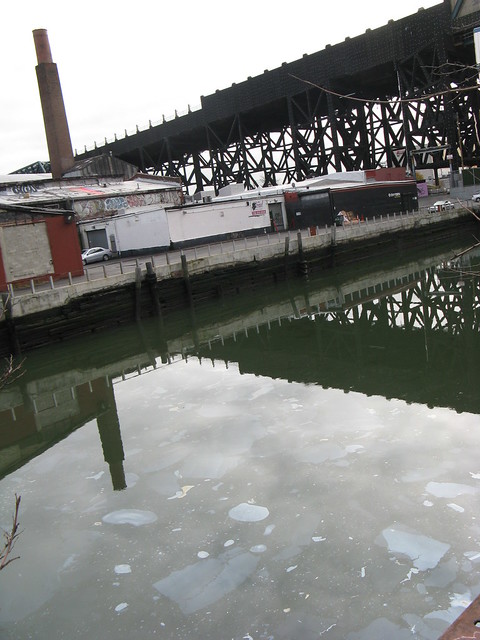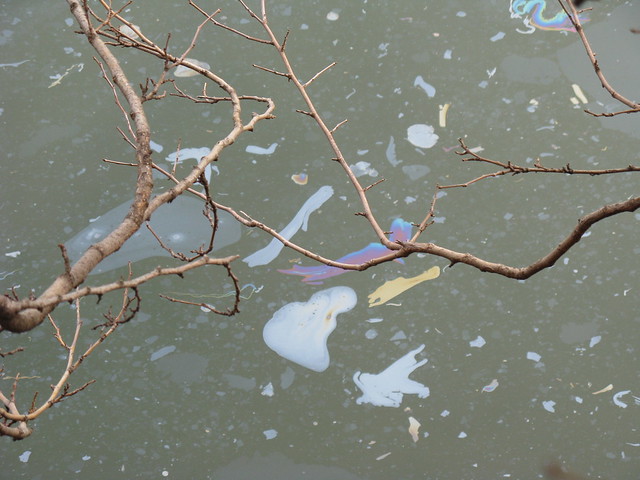
Flooding at First and Bond Streets during Hurricane Sandy
It is provided by Riverkeeper, NY's clean water advocacy organization. The group tested New York Harbor's waters last Friday and found that the Gowanus Canal had the highest level of Enterococcus ), which indicates extreme sewage contamination. Clinical infections caused by Enterococcus include urinary tract infections, bacteremia, bacterial endocarditis, diverticulitis, and meningitis.
In addition, the waters of the Gowanus are laced with hazardous pollutants.
Please pass around the information below to those in the Gowanus area that are trying to clean up after the storm
Critical Cleanup Tips for Homeowners, Renters and Businesses Dealing
with Flooding from Superstorm Sandy
As you address damage from Superstorm Sandy floodwaters in your home, apartment or business, Riverkeeper wants you to be aware of critical safety tips that could prevent sickness today and for years to come.
AVOID MOLD: CLEAN NOW, CLEAN THOROUGHLY
Federal, state and city health and environmental officials agree with our scientific experts, who believe that mold may be the biggest long-term problem most people face.
To avoid mold, remove standing water and dry indoor areas thoroughly. Discard anything that was wet for more than 24-48 hours, including mattresses, carpeting and rugs, upholstered furniture, cosmetics, stuffed animals, baby toys, pillows, foam rubber items, books, wall coverings and most paper products. Wash clothing used during cleanup separately from other laundry and with hot water and detergent.
For detailed cleanup instructions, see this CDC Website or Fact Sheet. For additional tips, look to the NYC Department of Environmental Protection’s flood site. If you need professional help in the New York City area, the DEP recommends contacting an environmental contractor. A list of contractors in the New York City area is provided by the Environmental Contractors Association.
AVOID CONTACT WITH FLOOD WATERS
We also want to reiterate that flood waters are likely contaminated with sewage and possibly with other hazardous pollutants. During the storm, as with any rain storm, sewage was discharged untreated from most New York City, Northern New Jersey and Hudson Valley sewer systems; the usual flow of sewage was compounded by power outages, storm surge flooding and other conditions that kept some plants off line after the storm. Today, nearly all plants in New York City and the Hudson Valley are fully treating waste and operating at full capacity. Exceptions include the Rockaway, Oakwood, Coney Island and Yonkers plants, which are either treating partially or at less than full capacity. The situation in New Jersey looks troubling, with hundreds of millions of gallons of untreated sewage still discharging daily into New York-New Jersey Harbor and Raritan Bay.
If you must come into contact with flood waters, wear gloves and other protections to prevent direct contact, especially with open wounds; wash frequently with soap, especially before eating or drinking; and keep vaccinations current. Do not smoke.
REDUCE WATER USE
Particularly if you live in an area where a sewage plant is compromised, including Westchester County’s Hudson River towns, limit your use of water to essential needs like cooking and drinking (follow boil water directives if in place in your area). Follow the “if it’s yellow, let it mellow” mantra to limit flushing of toilets. This will reduce strain on the plants while they aren’t running at full capacity or treating waste thoroughly. Try to make these steps a habit—especially during rain storms—to reduce water pollution.
While Riverkeeper focuses on storm response critical to our core mission of protecting the Hudson River and our drinking water, we want you to be safe and well informed as you respond to flooding in your home, business or neighborhood. If you’re fortunate enough not to have been affected by the storm, consider how you can help others.













